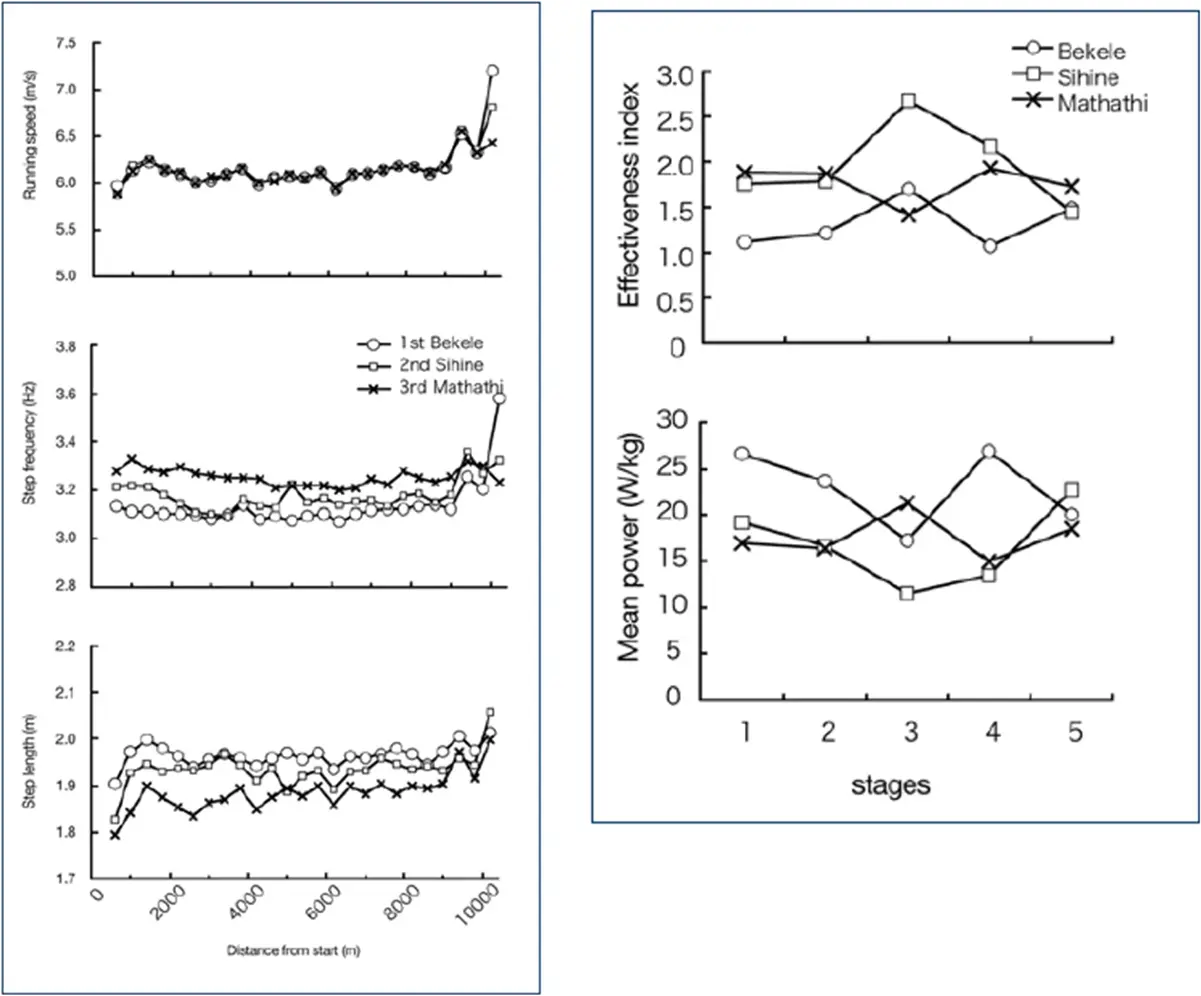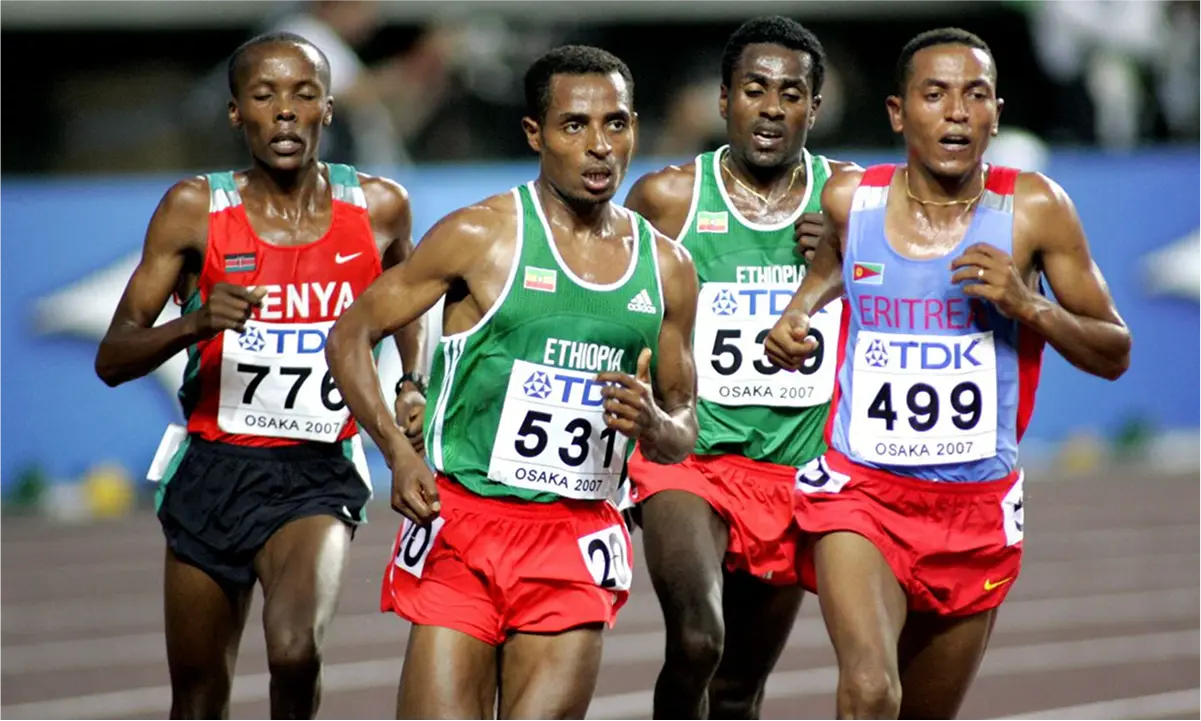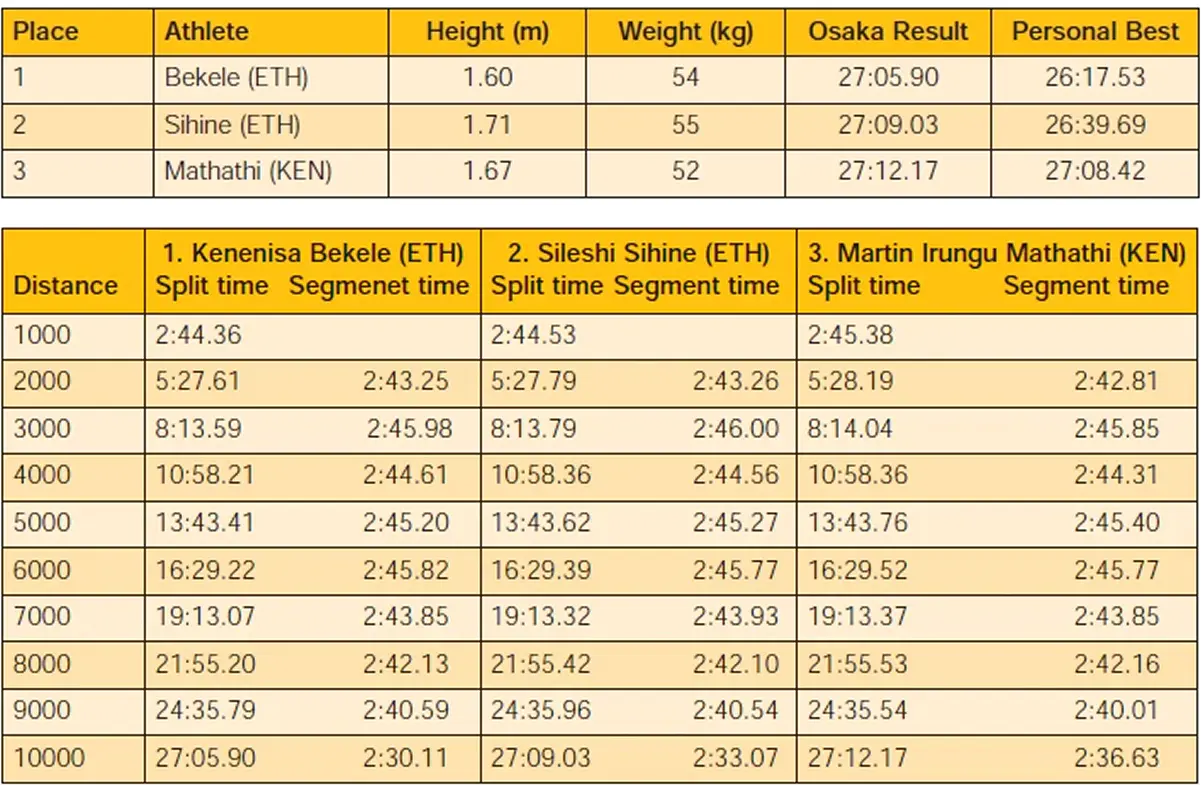
Utilizing Running Mechanics to Improve Speed
Introduction
One of the most crucial aspects of achieving a successful marathon performance is maintaining a consistent pace throughout the entire race. Effective race pacing is key to reaching your goal time, which is why many runners dedicate themselves to training for better speed. Sustaining a high average pace demands significant energy—but the way you run can greatly influence how efficiently that energy is used. In other words, energy efficiency plays a critical role in maintaining speed. Proper running form enhances muscular coordination and energy efficiency, both of which are closely linked to performance. Your running form is tied to your body’s mechanical movement, and the biomechanical indicators observed during running are known as Running Mechanics. Among these, cadence and stride length are the most intuitive and accessible to measure. This article will explore these two key metrics and examine case studies of world-class athletes.
Stride and Cadence
The “distance run per minute” is determined by multiplying stride length (the distance covered in one step) by cadence (the number of steps taken per minute). Let’s take a closer look at both. Stride Length refers to the distance between each footfall and reflects the force generated by your muscles during each step. A proper stride maximizes energy efficiency and helps prevent injury. However, the ideal stride length varies based not only on running speed but also on individual characteristics such as height, leg length, and fitness level, making it difficult to define a one-size-fits-all number. A proper stride is achieved when the foot lands close to the body's center of mass. Overstriding occurs when your foot lands too far in front of your center of mass. This leads to a braking effect upon landing, requiring more propulsion to maintain speed and increasing the risk of injury due to uneven shock distribution. In short, overstriding causes unnecessary energy loss and injury risk. Conversely, understriding refers to steps that are too short, with the foot landing too far behind the center of mass. This reduces ground contact time and limits propulsion, potentially increasing energy consumption to maintain speed. To run efficiently, it’s crucial to avoid both overstriding and understriding and instead find a stride length appropriate for your body. Cadence is the number of steps you take per minute—a vital indicator of running efficiency. It's typically measured in steps per minute (spm) or sometimes as step frequency (steps per second). Like stride length, optimal cadence varies by speed and body type, so no fixed value works for everyone. Statistically, cadence generally ranges from 165 to 190 spm. Taller runners tend to have lower cadences, while experienced runners may exhibit higher cadences—sometimes over 190 spm. A cadence below 165 spm often indicates overstriding. Maintaining a proper cadence improves rhythm, enhances energy efficiency, and helps prevent injuries.
Stride or Cadence: Which Should You Increase?
Speed is the product of stride length and cadence. So increasing either can improve your running speed. But from a performance standpoint, which is more efficient to improve?
Here is an analysis of data from the men’s 10,000-meter final at the 2007 IAAF World Championships in Osaka, focusing on the top three finishers.

 Researchers used digital video cameras to record segments of the race and conducted 3D motion analysis to evaluate running form and energy efficiency. They recorded the time it took to cover each 100 meters and counted steps to calculate stride length.
The three athletes maintained nearly identical speeds up to 8800 meters, then increased their pace significantly in the final three laps. Their rankings were determined during the final 400 meters.
Researchers used digital video cameras to record segments of the race and conducted 3D motion analysis to evaluate running form and energy efficiency. They recorded the time it took to cover each 100 meters and counted steps to calculate stride length.
The three athletes maintained nearly identical speeds up to 8800 meters, then increased their pace significantly in the final three laps. Their rankings were determined during the final 400 meters.
 Bekele maintained a stride length of 1.95 meters and a cadence of around 180–185 spm, relying on a relatively long stride and fewer steps.
Bekele maintained a stride length of 1.95 meters and a cadence of around 180–185 spm, relying on a relatively long stride and fewer steps.
Sihine had a stride length of about 1.9–1.95 meters and a cadence of 180–190 spm.
Mathathi, in contrast, had a shorter stride of about 1.85–1.9 meters but a higher cadence of 185–195 spm.
The ratio of stride length to height was 1.23 for Bekele and 1.13 for the others. All three maintained consistent running form throughout the race.

In Closing
In the final lap, Bekele increased his cadence to 215 spm. Meanwhile, Sihine and Mathathi extended their strides to over 2 meters for their final sprint. The study found that although Bekele generated more average power throughout the race, all three runners had similar energy efficiency. None exhibited abnormal fatigue post-race. This suggests that there is no universally superior method. Even among world-class athletes, stride length and cadence vary widely, and the way each runner increases speed is different. Statistics also show that each runner has unique stride and cadence patterns, and speed improvement strategies can vary—some focus on increasing stride, others on cadence, or a combination of both. Ultimately, the optimal solution for each individual is the one that minimizes oxygen consumption, maximizes energy efficiency, and reduces physical fatigue.